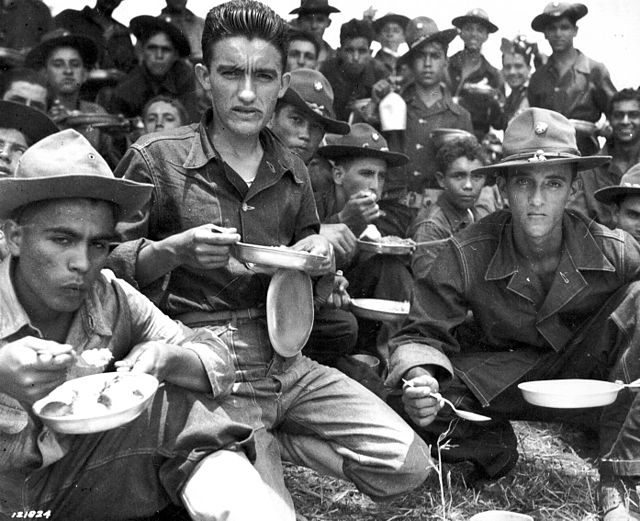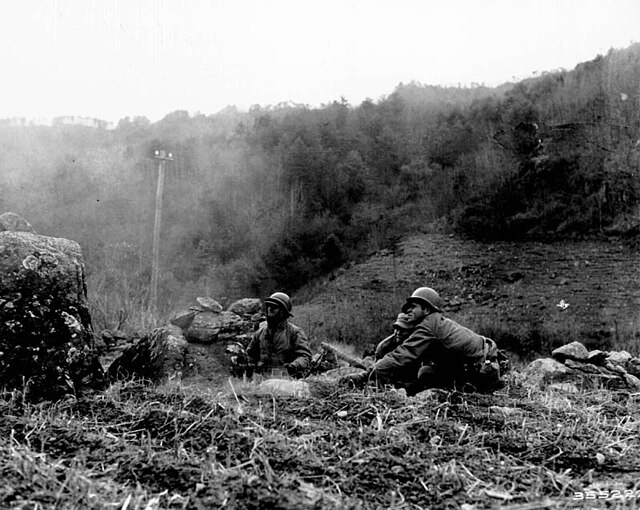65th Infantry Regiment (United States)
The 65th Infantry Regiment, nicknamed "The Borinqueneers" during the Korean War for the original Arawak Indian name for Puerto Rico (Borinquen), is a Puerto Rican regiment of the United States Army. The regiment's motto is Honor et Fidelitas, Latin for Honor and Fidelity. The Army Appropriation Bill created by an act of Congress on 2 March 1899 authorized the creation of the first body of native troops in Puerto Rico. On 30 June 1901, the "Porto Rico Provisional Regiment of Infantry" was organized. On 1 July 1908, Congress incorporated the regiment into the Regular Army as the Puerto Rico Regiment of Infantry, United States Army. On 14 May 1917, the regiment was activated and additional men were assigned, with the unit being sent to serve at Panama. On 4 June 1920, the regiment was renamed 65th Infantry. During World War II, the regiment saw action throughout Europe, especially France and Germany, participating in Naples-Foggia, Rome-Arno and Rhin. Several Purple Hearts were awarded posthumously to members of the 65th Regiment.

Officer Staff of the Porto Rico Infantry (cir. 1906) Lt. Teófilo Marxuach pictured on top row, fifth L-R
Soldiers of the 65th Infantry training in Salinas, Puerto Rico. August 1941.
65th Infantry troops convoyed through Isabel Segunda for PORTREX.
Company C on patrol
Puerto Ricans, most commonly known as Boricuas, and also referred to as Borinqueños, Borincanos, or Puertorros, are the people of Puerto Rico, the inhabitants and citizens of the Commonwealth of Puerto Rico and their descendants, including those in mainland United States.
Crowd gathering on a street in Puerto Rico in 1939, photographed by Robert Yarnall Richie
Two men sit by the side of a road with the ocean behind them in Puerto Rico.
José Campeche is the first known Puerto Rican visual artist.
"A Puerto Rican family lives here" sign on a wall in San Juan








